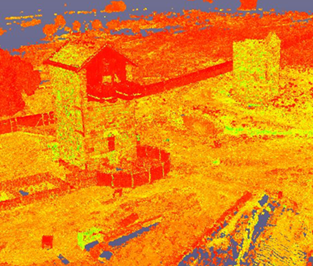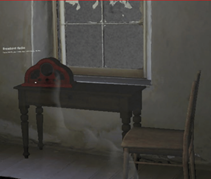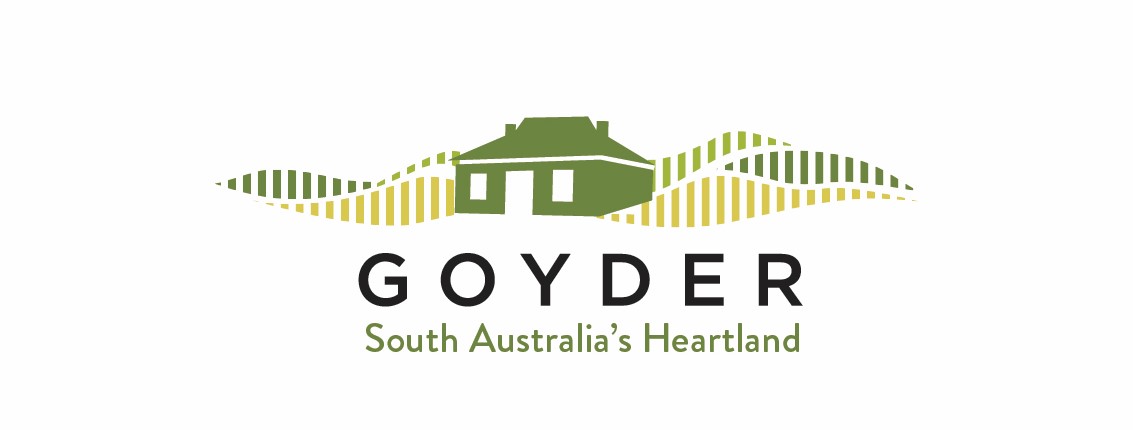We are preserving and re-presenting cultural heritage using immersive technologies that highlight how this important intergenerational knowledge can help tackle complex contemporary problems.
Cultural heritage comes in many forms – dynamic traditions and socio-cultural practices that affect the production of built environments. The ideas and knowledge inherent in these forms are invaluable sources of information for current and future generations, but this knowledge is at risk. Its transmission is complex, compromised by conditions from bias to being lost as traditional preservation and sharing methods are sometimes disrupted.
We are collaborating with the Regional Council of Goyder in South Australia’s mid-north to record and re-contextualise lessons from local cultural heritages to preserve history and provide valuable evidence and content for the application for World Heritage status.
THE LOSS OF CULTURE, HERITAGE AND ENVIRONMENT
The link between the environment and cultural heritage is often overlooked. Other important knowledge system s are also vulnerable to disruption, with the passing of information from one generation to the next through storytelling or physical instruction sometimes considered out-of-date, and the ideas also vulnerable to being judged irrelevant to contemporary problems, with technological solutions prioritised.
s are also vulnerable to disruption, with the passing of information from one generation to the next through storytelling or physical instruction sometimes considered out-of-date, and the ideas also vulnerable to being judged irrelevant to contemporary problems, with technological solutions prioritised.
After the discovery of copper in the Burra Region, the Ngadjuri people faced significant challenges due to the arrival of Europeans and their industrial activities such as open-cut copper mining and large-scale pastoralism. These activities led to irreparable damage to the Ngadjuri cultural landscapes, including their songlines and Ancestral Dreaming stories.
The colonial town of Burra, characterized by its stone buildings constructed from the local environment, played a significant role in this narrative. These buildings unintentionally became a canvas for the Ngadjuri people to tell their own stories and narratives as a way of coping with the scars left by colonialism.
CULTURAL EXPERIENCE IMMERSION
The Vernacular Knowledge Research Group used a multi-pronged approach to explore how the cultural herita ge of both the European settlers and the Ngadjuri community is intertwined and revealed through the architectural heritage of the colonial buildings. Exploring how the cultural heritage of two communities is provocatively and conceptually unpacked through the vernacular buildings’ cross-cultural foundations. With permission, we co-authored Ngadjuri narratives; manually drew buildings that were the subject of these stories as well as laser scanned and augmented their representations to better understand the complex history and cultural interactions between these two communities. The outcomes of this research assist in preserving this history and increasing community engagement. Using manual, digital, and mixed-media technologies we re-contextualised heritage buildings. Users were encouraged to engage with the forms through technologies like augmented reality, hololens' perspectives which can increase engagement and partaking with the narrative.
ge of both the European settlers and the Ngadjuri community is intertwined and revealed through the architectural heritage of the colonial buildings. Exploring how the cultural heritage of two communities is provocatively and conceptually unpacked through the vernacular buildings’ cross-cultural foundations. With permission, we co-authored Ngadjuri narratives; manually drew buildings that were the subject of these stories as well as laser scanned and augmented their representations to better understand the complex history and cultural interactions between these two communities. The outcomes of this research assist in preserving this history and increasing community engagement. Using manual, digital, and mixed-media technologies we re-contextualised heritage buildings. Users were encouraged to engage with the forms through technologies like augmented reality, hololens' perspectives which can increase engagement and partaking with the narrative.
IMPACT
By sharing and preserving this cultural heritage in interesting, immersive, and interactive ways, the project acts as an invitation for the community, industry, and researchers to understand how this deep knowledge can be meaningfully applied to preserve knowledge and history. The research outcomes are already being utilised by the GLAM sector, cultural heritage practitioners, and academics. The project has wider potential benefit as well – with the information and processes relevant to historians, cultural institution enthusiasts, curators, educators, and cultural heritage tourism operators.
"As we embark on the journey towards securing World Heritage status for the Australian Cornish Mining Sites in Burra and Moonta, we are excited to embrace a diverse range of cutting-edge immersive technologies to foster greater community engagement well beyond the confines of Burra. We look forward to collaborating on these initiatives with the expertise of UniSA's VKRG to bring these culturally important sites to life."
Mayor Bill Gebhardt
Regional Council of Goyder
for more information or to discuss a similar potential project contact: Julie.Nichols@unisa.edu.au



